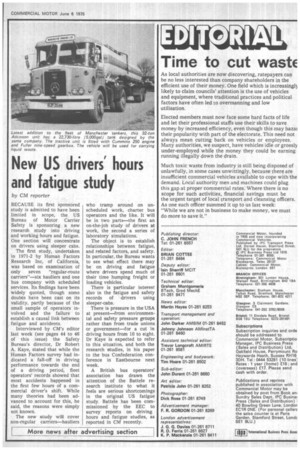New US drivers' hours and fatigue study
Page 7

If you've noticed an error in this article please click here to report it so we can fix it.
by CM reporter BECAUSE its first sponsored study is admitted to have been limited in scope, the US Bureau of Motor Carrier Safety is sponsoring a new researoh study into driving and working hours and fatigue. One section will concentrate on drivers using sleeper cabs.
The first study, undertaken in 1971-2 by Human Factors Research Inc, of California, was based on examination of only seven "regular-route carriers"—six hauliers and one bus company with scheduled services. Its findings have been widely quoted, though some doubts have been cast on its validity, partly because of the small sample of operators involved and the failure to establish a causal link between fatigue and accidents.
Interviewed by CM's editor last week (see pages 44 to 46 of this issue) the Safety Bureau's director, Dr Robert A. Kaye, stated that while the Human Factors survey had indicated a fall-off in driving performance towards the end of a driving period, fleet operators' records showed that most accidents happened in the first few hours of a commercial driver's shift. While many theories had been advanced to account for this, he said, the reasons were simply not known.
The new study will cover non-regular carriers—hauliers who tramp around on unscheduled work, charter bus operators and the like. It will be in two parts—the first an on-the-job study of drivers at work, the second a series of laboratory simulations.
The object is to establish relationships between fatigue, and related factors, and safety. In particular, the Bureau wants to see what effect there may be on driving and fatigue where drivers spend much of their time humping freight or loading vehicles.
There is particular interest also in the fatigue and safety records of drivers using sleeper-cabs.
There is pressure in the USA at present—from environmental and safety pressure groups rather than from trade unions or government—for a cut in driving hours from 10 to eight. Dr Kaye is expected to refer to this situation, and both the research studies, in his paper to the bus Confederation conference in Eastbourne next week.
A British bus operators' association has drawn the attention of the Battele research institute to what it feels are serious shortcomings in the original US fatigue study. Battele has been commissioned by the EEC to survey reports on driving hours and fatigue studies, as reported in CM recently:


















































































































